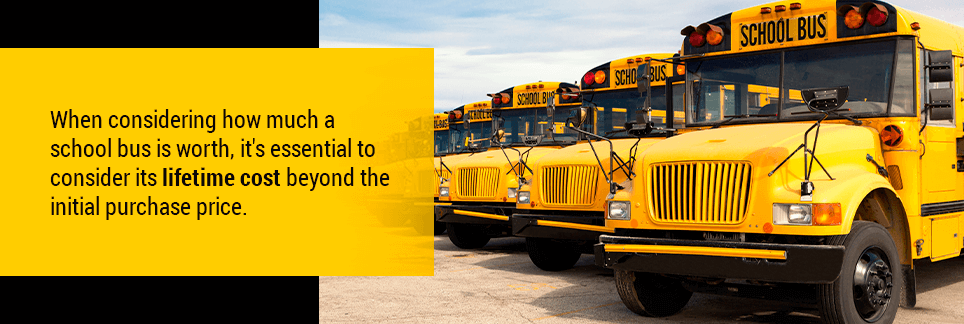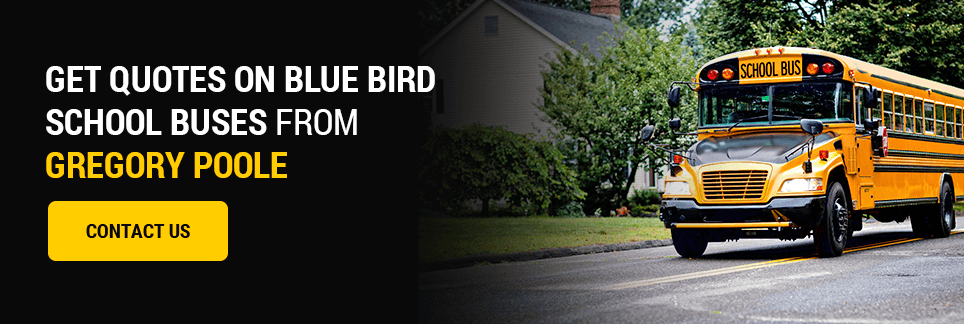Where Csn U Buy a Replica of a Blue Ct Bus

In 2021, 22.5% of schools plan to invest in clean diesel buses. In North Carolina, the average Type C bus retires after 20 years (about 250,000 miles), while the smaller Type A and Type B buses last 14.3 years. With an average fleet age hovering at 9.2 years, schools usually retire a few buses each year as they reach the end of their useful life span.
If your district is in the market for new school buses, talk to the experts at Gregory Poole Bus Sales. As a premier Blue Bird dealer, we're the best place to buy a school bus in North Carolina. We can offer you free quotes on the exact models you're interested in, with the most accurate pricing for our local market.
New vs. Used
As with all equipment purchases, new will always cost more than used. Many factors affect the prices for both new and used buses. How much does an old, used school bus cost? The pricing depends on its condition and mileage. A rusty bus in poor condition will likely require a heavy investment in repairs and will therefore have a lower upfront cost.
A refurbished used bus that's not too old and doesn't have many miles will be a much safer investment for the higher cost. Some estimates say that a used school bus with between 80,000 and 180,000 miles may cost anywhere from $3,000 and $10,000 and may be a little higher than that if it's in great condition. While you can often find used buses in excellent shape, only 24% of schools buy used buses for their fleets.
At 68%, an overwhelming majority of operators are planning to buy new buses in 2021. So how much does a new school bus cost? New buses can cost anywhere from $90,000 to $290,000, depending on the type. Most schools need to apply for financing and grants to cover their fleet renewal costs. The added investment can be worth the price with lower initial maintenance costs and longer service life out of every vehicle.
Size
School buses are classified into four size categories. Type A and Type B buses are smaller and can carry 10-30 passengers. Type C buses are full-sized, with a 54-90 passenger capacity. How much is a short school bus compared to a full-sized one? While larger buses usually cost more, they're typically the preferred option. Since they can seat more students, they save districts in bussing costs per student. That said, a mini school bus might cost less upfront and in ongoing fueling costs since it weighs less.
Energy Source
Fuel source affects everything from the complexity of the bus manufacturing to the ongoing maintenance and fueling costs. In general, higher initial investments can result in cost savings over time in lower maintenance costs, and vice versa:
- Diesel: Diesel is the most popular fuel source for school buses, with 73% of school transportation buyers preferring clean diesel buses, according to a survey by School Transportation News. According to 2018 data, a new diesel bus can cost $90,000 on average.
- Electric: Electric vehicle school buses typically cost more than diesel buses. Data from 2018 places them in the $290,000 range. However, the pricing is going down, and they have fewer moving parts, which results in less maintenance over time. The exact prices can vary by your school's needs, the manufacturer and location. It's crucial to weigh the cost of an electric vehicle by the total cost of ownership when deciding whether it's a good choice over diesel.
- Propane: Many cost-conscious school districts are increasingly turning to propane buses. Propane buses are less expensive than electric buses and just above diesel at $98,000. They also offer a better lifetime cost when considering vehicle life span and infrastructure like propane tanks. Propane buses are easier to maintain than diesel, which reduces some of the ongoing expenses. Propane fuel pricing is also lower and more stable than diesel prices. A Department of Energy study showed that school districts replacing diesel buses with propane buses found cost savings between $400 and $3,000 per year per bus, which was enough to compensate for the investment over three to eight years.
- CNG: Compressed natural gas (CNG) buses also cost more than diesel buses, with the cost savings coming from reduced maintenance costs and lower fuel costs. Like propane, CNG has more predictable costs than diesel fuel. These buses also start more easily in cold weather and don't need to be parked in heated facilities overnight. While the lifetime costs are lower, the initial cost is higher at $120,000 on average.
Upkeep and Maintenance Costs

When considering how much a school bus is worth, it's essential to consider its lifetime cost beyond the initial purchase price.
According to The School Superintendents Association (AASA), the average costs for operating and maintaining a school bus can range from $34,000 to $38,000 annually. That number includes the annual fuel costs in addition to maintenance, which can both vary by bus type. Propane and electric buses are both more affordable to maintain than typical diesel buses.
School districts with concerns about their high fleet maintenance costs can reduce their expenses with strategies such as:
- Keeping fewer backup buses: While having backup buses is helpful, they can also drive up your maintenance costs. They're on the road less often, but they still need regular maintenance, and sometimes even more if they sit unused for too long. Consider how many backups you really need to cover your regular fleet and sell the rest.
- Optimizing routes: Bus fleets can save on maintenance costs by cutting down on the total distance traveled and the number of stops. One study found that staggering school start times so districts can reuse the same buses for elementary, middle and high school results in significant savings. Combining that strategy with a bus routing optimization algorithm saved Boston Public Schools $5 million annually.
- Strategically buying fuel: Gasoline, diesel, propane and even electricity costs rise and fall throughout the year. Whenever possible, buy more fuel when the prices are low. If you have electric vehicles, charge them outside of peak electricity hours to avoid higher energy costs.
- Enforcing safe driving:School buses drive slow and make frequent stops. Naturally, they're not the most fuel-efficient vehicles on the road. However, ensuring your drivers drive in a way that prevents fender benders and more significant accidents can save you on maintenance costs while keeping students safer. Train your drivers regularly on safe driving. You can also employ technology to ensure buses follow speed limits and other rules of the road.
Get Quotes on Blue Bird School Buses
If you're still asking, "How much does a Blue Bird school bus cost?" you've come to the right place. Gregory Poole Bus Sales is North Carolina's premier Blue Bird dealer, and we have ample experience helping you find new and used school buses for your district. Browse our selection of new Blue Bird and Micro Bird buses, and contact us for a free quote on any of our school buses.

Source: https://www.gregorypoole.com/school-bus-costs/
0 Response to "Where Csn U Buy a Replica of a Blue Ct Bus"
Post a Comment